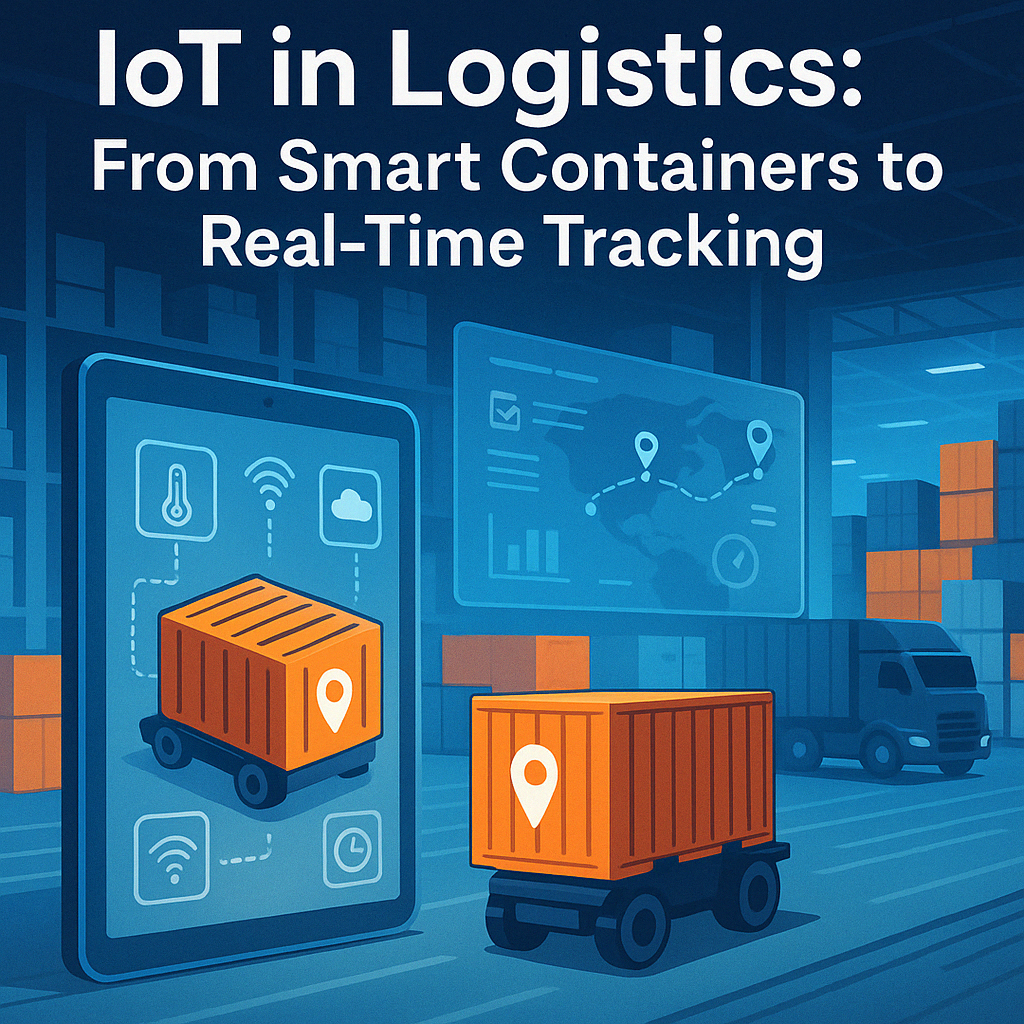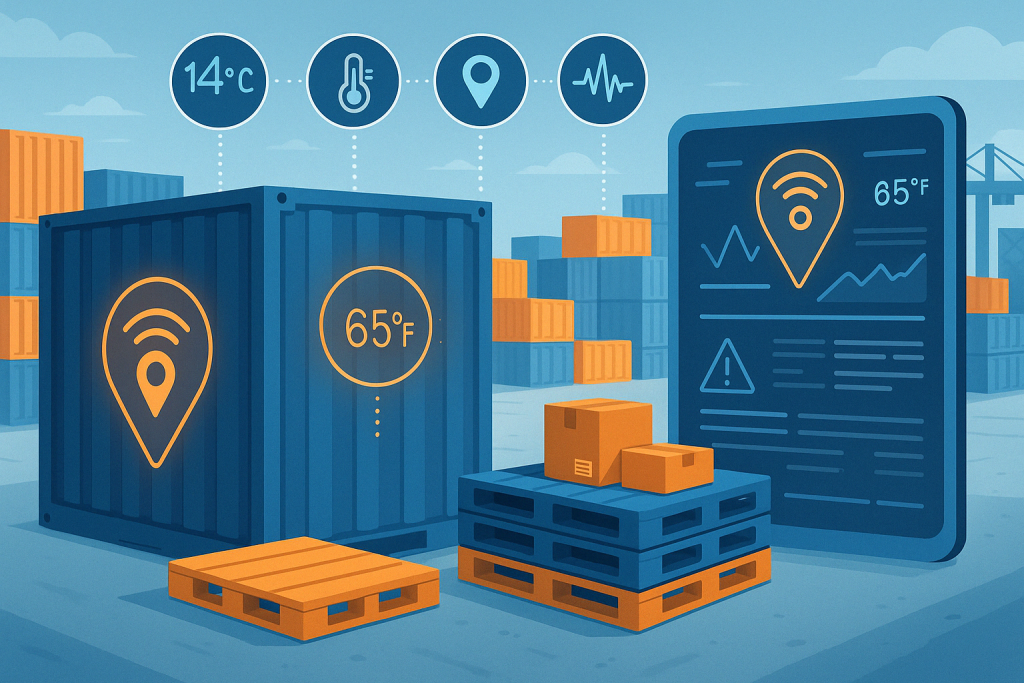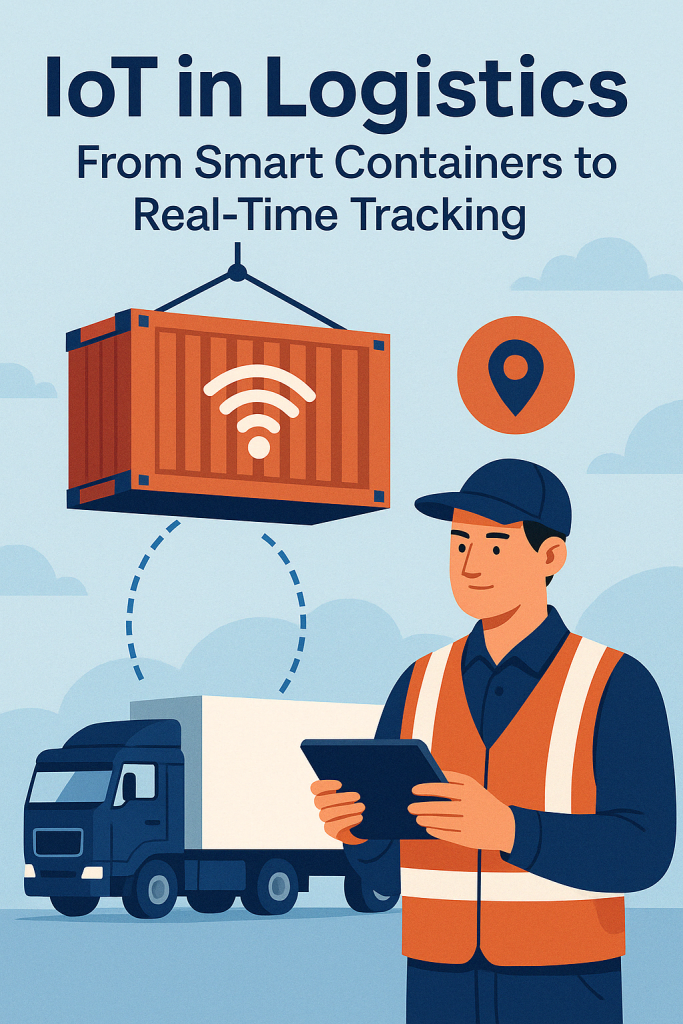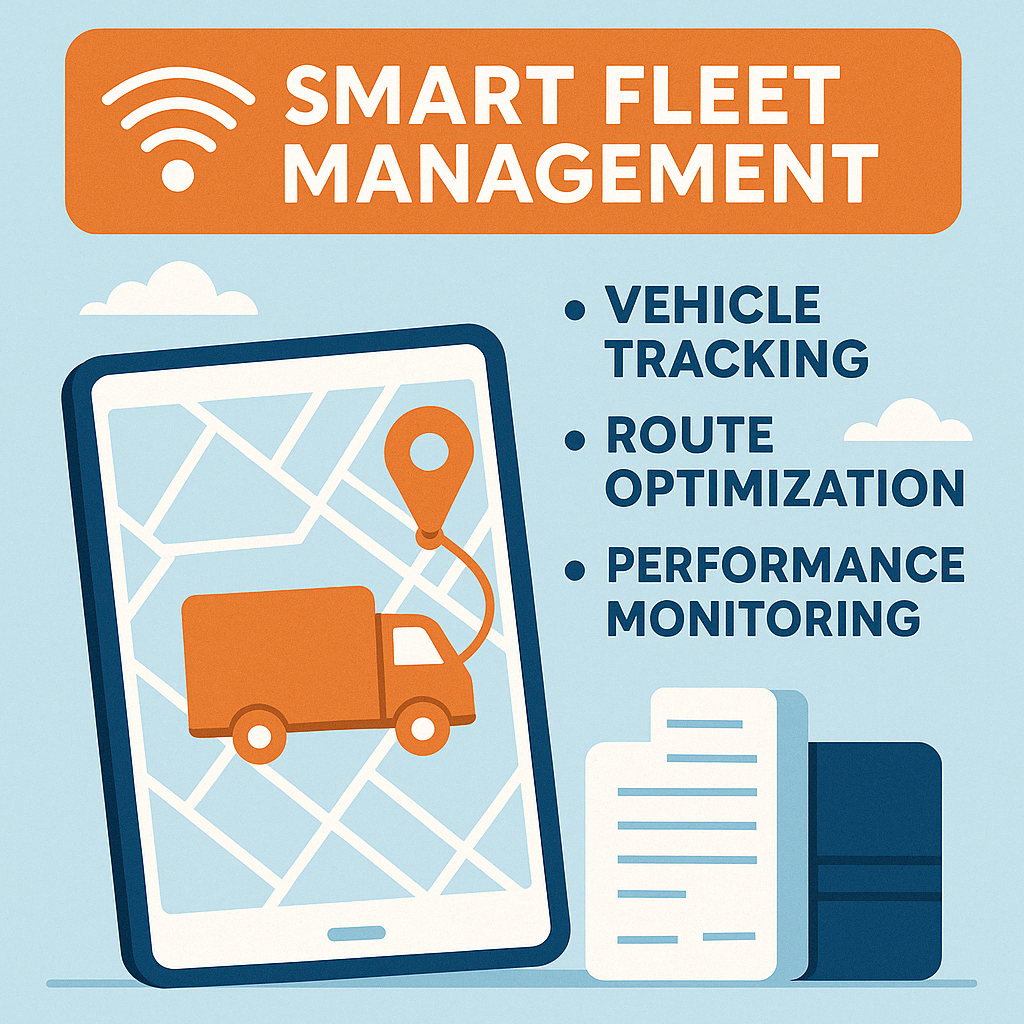IoT in Logistics: From Smart Containers to Real-Time Tracking

🌐 What is IoT in Logistics?
IoT refers to a network of physical objects—like containers, pallets, trucks, or packages—that are equipped with sensors, software, and connectivity to collect and share data over the internet.
In logistics, this enables:
- Real-time location tracking
- Environmental monitoring (temperature, humidity, shock)
- Predictive alerts for delays or tampering
- End-to-end supply chain visibility
IoT devices stream data back to logistics platforms, enabling faster decisions and proactive interventions.

🚚 Key Applications of IoT in Logistics Tracking
1. Smart Containers & Pallets
- Equipped with GPS and condition sensors
- Monitor temperature, light, motion, and door status
- Ideal for perishables, pharmaceuticals, and high-value goods
📊 Example: Get alerts when a container is opened unexpectedly or drops below a temperature threshold.
2. Vehicle & Fleet Tracking
- Track truck locations in real time
- Monitor driver behavior and fuel consumption
- Predict maintenance needs with sensor data
🛣️ Result: Safer driving, optimized routes, and lower fuel costs.
3. Warehouse Asset Tracking
- Use RFID, BLE, or UWB tags on inventory, forklifts, or bins
- Automate location updates and minimize search times
- Improve picking and replenishment accuracy
🏗️ Result: Fewer misplaced items and faster warehouse operations.
4. Cold Chain Monitoring
- Ensure temperature-sensitive goods are kept within specified ranges throughout transport
- Automated logging of conditions for compliance (FDA, GDP, etc.)
❄️ Result: Reduce spoilage and meet regulatory standards.
5. Predictive Analytics
- Combine IoT data with AI to predict shipment delays, equipment failure, or risk exposure
- Use historical trends to improve future performance
📈 Result: Proactive decision-making and continuous improvement.

🔗 How IoT Integrates with Logistics Software
IoT is powerful—but only when the data it generates is put to use.
That’s where logistics platforms like Linbis come in. When IoT devices are integrated with your WMS or TMS, you can:
- Visualize real-time status across all shipments
- Set up alerts for exceptions or thresholds
- Automate workflow triggers based on sensor input
- Generate reports on performance and compliance
📥 Example: If a container is delayed or compromised, the system can notify staff, flag the client, and reschedule delivery automatically.
✅ Benefits of IoT in Logistics
Benefit | Impact |
📍 Real-time visibility | Know exactly where assets are—at all times |
📉 Fewer disruptions | Respond to issues before they escalate |
🔐 Greater security | Detect tampering or unauthorized access |
❄️ Cold chain compliance | Track and log temperature-sensitive cargo |
💡 Better decision-making | Turn live data into actionable insights |
📌 What to Look for in an IoT-Enabled Logistics Platform
When evaluating platforms that support IoT tracking, look for:
- 🔌 Plug-and-play sensor integration
- 📊 Custom dashboards and reporting
- 🚦 Real-time alerts and automated workflows
- 🔐 Data encryption and compliance tools
- 📱 Mobile access for remote visibility
A scalable solution should support a wide range of IoT devices, communication protocols, and analytics layers—without requiring custom builds.

🚀 Final Thoughts IoT logistics tracking: Smarter Freight Starts with Smarter Tracking
IoT is transforming logistics from reactive to predictive. For freight forwarders and 3PLs, it means fewer surprises, lower risk, and higher customer satisfaction.
If you want better control over your supply chain, integrating IoT with your logistics platform is the next step forward.
From smart containers to fleet sensors, the data is already out there—what matters is what you do with it.
